I went out early on Christmas morning (2017) and got this sequence.
It appeared to me that the male Pheasant Coucal turned up, mated with the female bird and then gave her a frog.
Quite extraordinary!
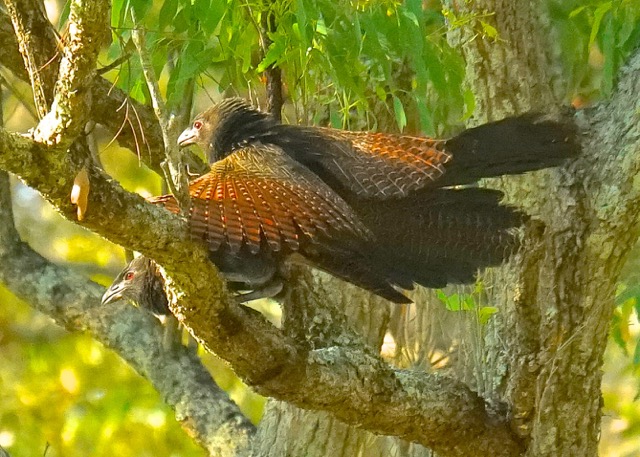
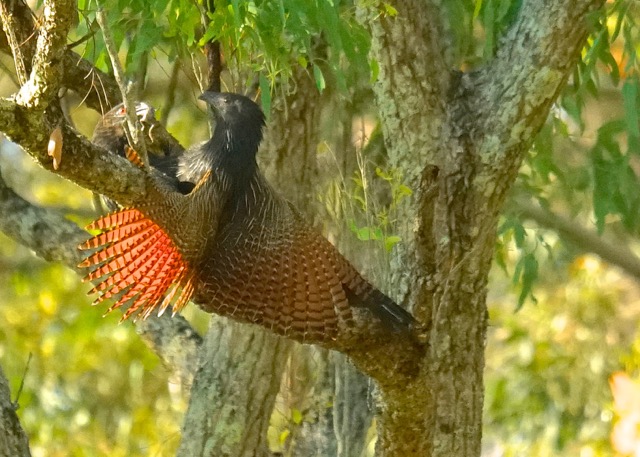
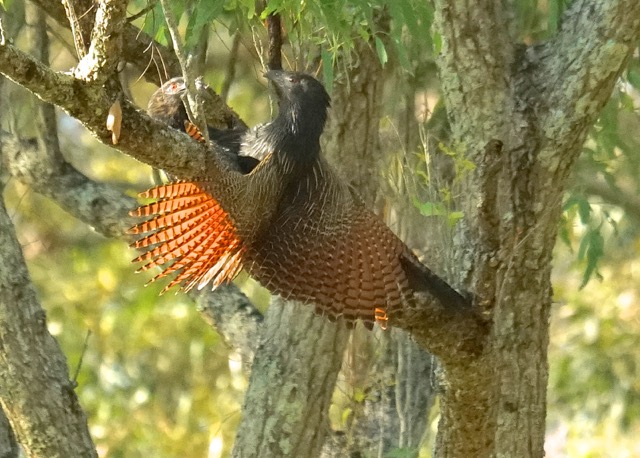
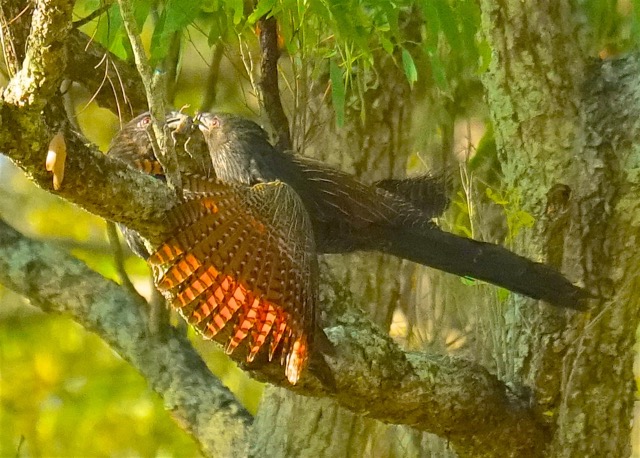
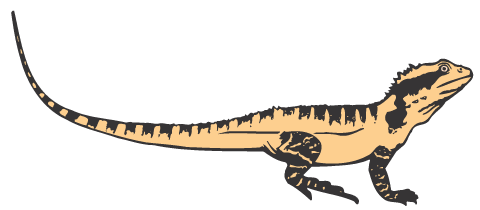
by mccgadmin
I went out early on Christmas morning (2017) and got this sequence.
It appeared to me that the male Pheasant Coucal turned up, mated with the female bird and then gave her a frog.
Quite extraordinary!




by mccgadmin
… whatever is meaningful, whatever brings you purpose and happiness … the MCCG wishes you these gifts during the Christmas season and extending into 2018.


We acknowledge the support and generosity of our volunteers, partners and the catchment community in general, and we look forward to an engaging and productive year ahead!
(Photo – Red-browed finches, courtesy of R Riccetti)
by mccgadmin
Last week Jim Butler set us all a challenge: to identify the species of three birds from photos in the December edition of ‘Feather Fascination‘. The photos were taken in our catchment by Ed Frazer. Jim suggested using our online Catchment Field Guides to identify the three mystery birds.

Double-Barred Finch
|
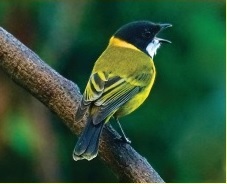 Golden Whistler
|
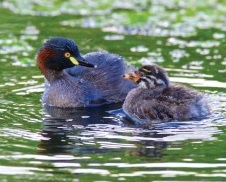 Australasian Grebe
|
To see more photos and learn about the extraordinary diversity of birds in our Catchment, select Catchment Field Guides from the menu on the left-hand side of your screen.
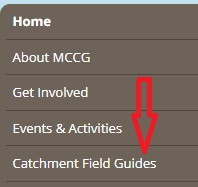
by mccgadmin
We are delighted to share some of the winning entries of this year’s Photography Competition.
The entries submitted this year were of extraordinarily high quality, each showcasing a different delightful angle of our wonderful Catchment.
We extend our congratulations to all winners, our sincere thanks to our sponsors and of course to the talented local photographers who submitted entries for the competition.
Please click here to view some of the winning shots!

by mccgadmin
Here’s a holiday challenge!
In this month’s issue of “Feather Fascination”, Jim Butler presents you with a challenge!
Click here to open the December issue and give it a go!
Note – check back right here next week to see how well you did!
by mccgadmin
In this Bush Bite, we pose some questions to Vicki and Paul Campbell about their observations of Barking Owls and Boobooks and the owls’ breeding behaviours over many years. Our heartfelt thanks to Vicki and Paul for sharing their experiences and photos with us!
We have two large Eucalypts on our place which have good nest hollows. I think Boobooks have used both trees. The first year of breeding was 2005. In that year an adult was seen to exit a hollow in one of these trees. The following year two juveniles were seen emerging from a hollow in the other tree. In this case the babies’ begging call (Trill calling) was heard before they emerged from the hollow.
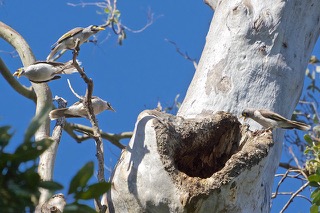
Breeding occurred every year from 2005 to 2010. There was no breeding from 2011 to 2014. Trill calling was heard from our yard in 2015 and 2016, but I’m not confident that they bred here as the calling was only heard for one night and three nights respectively. When they breed in our place the trill calling is heard consistently for 4 to 5 weeks, including numerous sightings of daytime roosts.
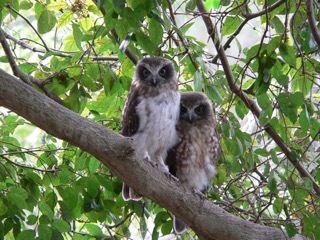
We don’t know how one of the juveniles lost its eye but one of two juveniles was located on the ground in 2010 after our attention was drawn by Pied Butcherbirds. It is quite possible that the butcherbirds were responsible for the eye loss.
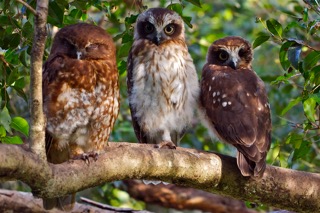
The juvenile with the missing eye would still have been fed by the adults when the photo was taken.
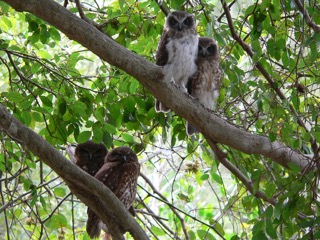
The daytime roosts were often located by the mobbing activities and calls of Blue-faced Honeyeaters, Pied Butcherbirds, Pied Currawongs and Noisy Miners. Generally the owls stayed put.
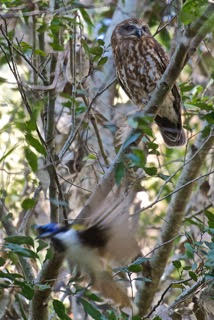
We could get fairly close to the birds. Their favourite roost was the lower branches of anaxe-handle wood tree, Aphananthe philppinensis. This was just above head height and could be viewed easily due to the slope going down to the creek.
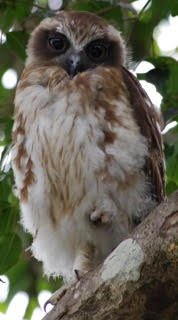
Trill calling started just on dusk and was sometimes heard during the evening but it did seem to cease. Maybe the birds moved away for part of the night. We certainly weren’t kept awake by their calls.

The Barking Owls preceded the Boobook Owl breeding records. The Barking Owls were in our yard and along Moggill Creek from October 2004 til July 2005. That was a joyous time!
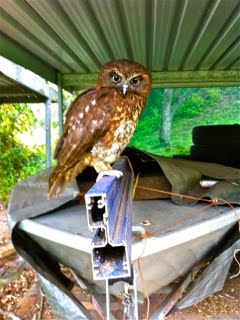
No real observations of food were seen. We did find the remains of a Noisy Miner under one of our Eucs which I suspect was a food item. On one occasion one of the juveniles was seen to catch something small, presumably an insect.You may also be interested to know that there were usually two juveniles, but only one on two occasions and three on one occasion.
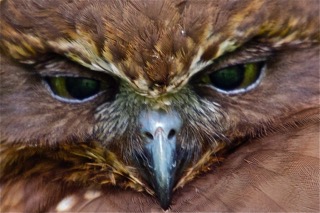
by mccgadmin
Location: To be confirmed
Type: Workshop
Organiser: BCC – Community Conservation Partnerships Program
Contact: Michael Thorley via email: [email protected]
Topic: Biological Monitoring: Fish sampling and id. Open to Creek Catchment members. Date subject to change. May require RSVP.
by mccgadmin
Location: To be confirmed
Type: Workshop
Organiser: BCC – Community Conservation Partnerships Program
Contact: Michael Thorley via email: [email protected]
Topic: Field application of all waterway health assessment methodologies
by mccgadmin
Location: Corra-Mulling Park, Yoorala Street, The Gap
Type: Workshop
Organiser: BCC – Community Conservation Partnerships Program
Contact: Anna Bourke (07) 3407 0925
Native fish expert Leo Lee will guide participants through the requirements and methodology to undertake an Fish surveys in your local creek. Training will include capture techniques, identification of fish species, and how the results relate to waterway health. This is a fantastic workshop for those interested in monitoring creek health, and providing and protecting aquatic habitat.
by mccgadmin
Location: To be confirmed
Type: Event
Organiser: BCC – Community Conservation Partnerships Program
Contact: email to [email protected]
Open to Creek Catchment members. Date subject to change. May require RSVP.
